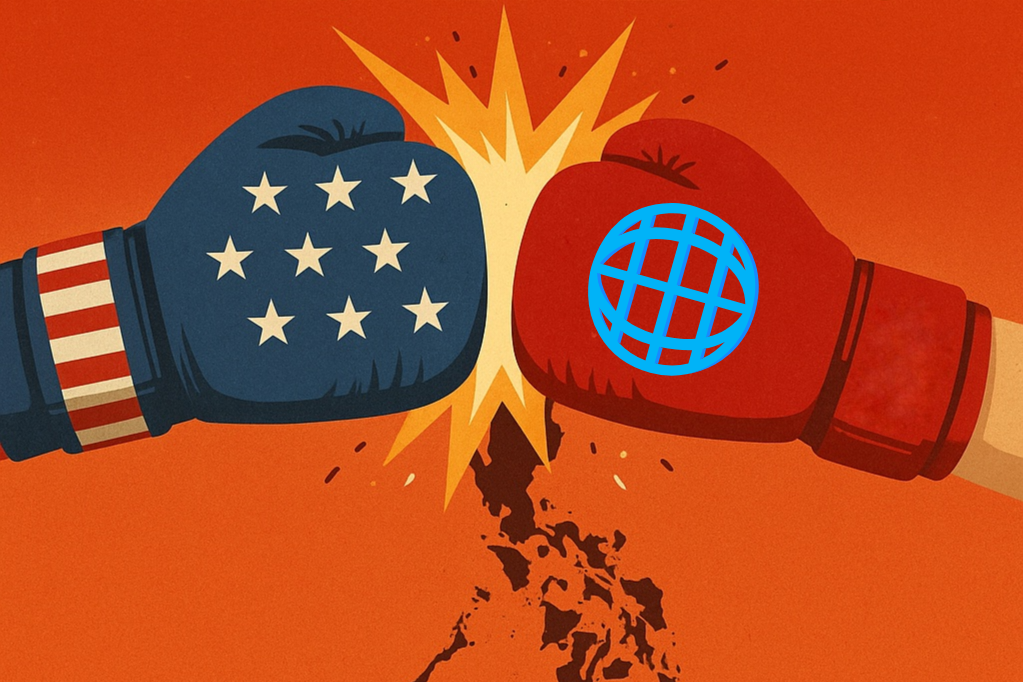Trading blows: The tariff war that’s hitting the Philippines
For years, global trade was the default engine of growth. But as we pass the midpoint of 2025, it’s sputtering badly—and not because of any natural cooling. This slowdown is man-made, self-inflicted, and increasingly perilous.
According to the World Bank, global trade growth is forecast to decelerate from 3.4% in 2024 to just 1.8% in 2025. That’s less than half the average 4.9% annual growth seen in the two decades before COVID-19—and the sharpest revision in more than a decade. The culprit? A toxic cocktail of tit-for-tat tariff hikes, protectionist pivots, and whiplash-inducing policy uncertainty.
At the heart of the storm: the United States. In April, Washington stunned the world with sweeping new tariffs targeting imports from multiple trading partners—partly to appease domestic manufacturing lobbies, partly to reflect the new administration’s tougher trade stance. The resulting retaliation from trading blocs and emerging markets has triggered a cascading effect across supply chains. Though some of the tariffs have since been rolled back, the damage has been done. Confidence has cracked, uncertainty is entrenched, and trade volumes are tumbling.
April’s global goods imports grew just 2.9% year-on-year—down from 6.7% in March—while U.S. import volumes plunged by nearly 20% month-on-month. Manufacturing export orders fell to a 20-month low, per global PMI (Purchasing Managers’ Index) data. The warning lights aren’t blinking—they’re blazing.
A dangerous drift toward economic balkanization
Globalization isn’t dead—but it is bleeding out in slow motion. What’s replacing it is a fractured, politicized trade landscape where national interest trumps mutual benefit and “friend-shoring” replaces free trade. Advanced economies, responsible for nearly 70% of new trade restrictions since 2022, are erecting barriers faster than they’re building bridges. This, despite the fact that their own supply chains remain deeply entwined with emerging markets.
Countries deeply embedded in global value chains—especially in Latin America, Central Asia, and Southeast Asia—are taking the brunt of the blow.
Trade-dependent economies are watching with alarm as once-reliable partners turn inward. And while some oil-exporting nations may see a short-term reprieve as production ramps up, most emerging markets are being dragged into a slow-burning crisis they did not cause.
Philippine business pushes back
In the Philippines, concerns over the fallout are growing louder. The Federation of Filipino-Chinese Chambers of Commerce and Industry Inc. (FFCCCII) issued a strongly worded statement opposing the U.S. imposition of additional punitive tariffs on Philippine exports.
Calling it a violation of WTO (World Trade Organization) principles and a threat to regional stability, FFCCCII president Victor Lim warned of broken supply chains, economic disruption, and dangerous precedents for economic fragmentation.
“Our domestic industries require and deserve a level playing field in global markets. Protect our workers and farmers,” the group said, calling for immediate consultations, a fast-tracked U.S.-Philippines free trade agreement, and enhanced WTO engagement.
The FFCCCII’s message is clear: the Philippines cannot afford to be collateral damage in a superpower trade war. Backed by 170 member organizations representing Filipino-Chinese businesses and chambers of commerce nationwide, the group’s warning underscores how deeply exposed the country is to global trade disruptions.
Bright spots or false dawns?
There are glimmers of hope—but they come with caveats. The global surge in regional trade agreements (RTAs) may buffer some of the fragmentation. According to the WTO, seven new RTAs took effect in 2024, including deals between the European Union (EU) and Chile, China and Nicaragua, and Canada and Ukraine. The African Continental Free Trade Area (AfCFTA) continues to make progress. And the Comprehensive and Progressive Agreement for Trans-Pacific Partnership (CPTPP)—now including the UK, China, South Korea, and Indonesia—remains a beacon of trade cooperation.
Yet the question lingers: can regional pacts substitute for a rules-based global system? Or are they just lifeboats in a sinking ship?
Meanwhile, the U.S. and EU are rekindling trade talks with select partners, but progress is uneven and politically fraught. The Trump administration is negotiating over a dozen bilateral agreements, yet the shadow of protectionism looms large over every table.
A policy reckoning is coming
Policymakers face a critical choice. Do they double down on short-term economic nationalism and risk a prolonged slump in global trade, investment, and productivity? Or do they pull back from the brink and reinvest in the rules-based system that underpinned decades of shared prosperity?
If the current trajectory holds, the global economy could be entering a “long chill”—a period of sluggish trade growth, stalled innovation, and deepening geopolitical divides. Supply chains will reroute, but not without pain. Investment will slow, and smaller economies will be left to fend for themselves.
What’s needed now is not just damage control but course correction. This means dialing down the rhetoric, reviving multilateralism, and treating trade not as a geopolitical weapon but as a public good.
As the World Bank puts it: “Well-targeted policy efforts can steady the ship, dampen shocks to the global trading system, and lay the groundwork for a gradual recovery.”



0 Comment